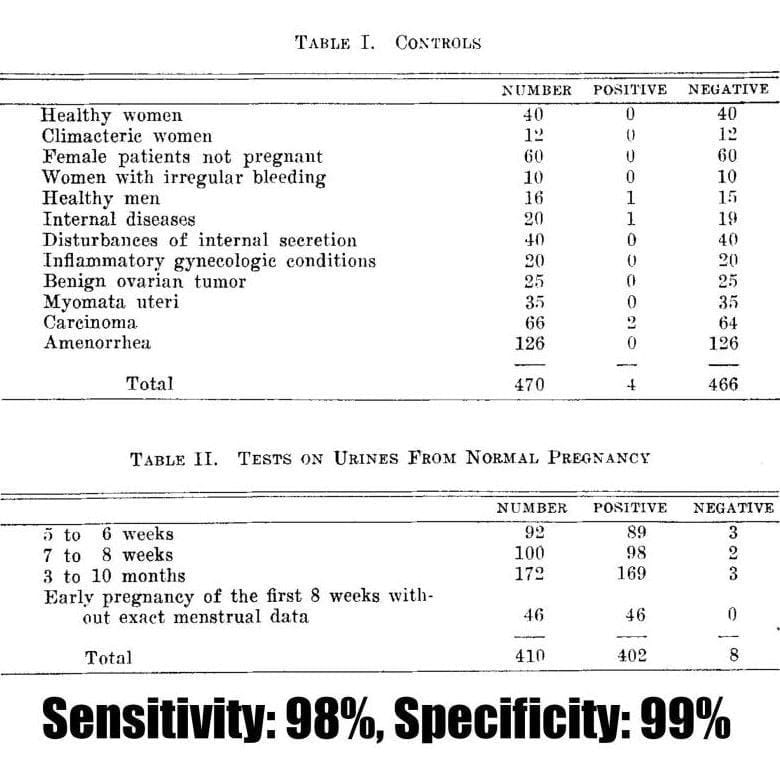Mice, Frogs, Rabbits, OH MY! The early days of pregnancy testing were wild.
For the better part of 40 years, pregnancy tests were done by injecting urine into animals and seeing what happened. No, seriously!

Prior to 1928, determining whether someone was pregnant was a waiting game.
However, that didn’t stop people from trying to predict whether a missed period meant that a baby was on the way.
These early 'tests' ranged from mundane to insane and usually involved 'analyzing' urine.
The reason for this is probably due to its proximity to the birth canal.
And purveyors of these early tests were often referred to as 'piss prophets.'
This hints at the accuracy of such methods, but urine was actually the ideal sample type!
Before we get to WHY that is, we need to talk about the birds and the bees.
We know now that one of the first hormones to appear after sperm fertilizes an egg is human chorionic gonadotropin (hCG).
It is produced by the trophoblast cells that surround a developing embryo which eventually go on to form the placenta.
hCG’s function is to signal the ovaries, specifically the corpus luteum, to continue producing progesterone and estrogen.
This prevents the sloughing off of the endometrium and its discharge which marks the end of the menstrual cycle.
It’s these hormones that serve as the basis for modern pregnancy testing.
But in the early 1900’s, ‘hormones’ were a totally new concept with the word itself being coined by Ernst Starling in 1905.
By the 1920’s, scientists were finally starting to unravel the secrets of how hormones regulate the differences between the biological sexes.
Early work by Selmar Aschheim and Bernhard Zondek showed that extracts from the anteropituitary (the back of the pituitary gland) could promote ovary development and growth in animal models.
In 1927, they discovered that the urine of pregnant mice contained many of these same hormones and it had a similar stimulatory effect on their ovaries.
They quickly realized that injecting human urine into mice and seeing if their ovaries grew could be used to diagnose pregnancy and published on this in 1928.
Unfortunately, this paper has no figures, but Ascheim published a follow-up paper in 1930 detailing the utility of the Ascheim-Zondek test for the diagnosis of pregnancy and placental tumors.
The two tables above display the impressive performance of the test in detecting 98% of pregnancies!
Further improvements came in 1936 with the Friedman or 'Rabbit' test in the US that gave results in 24hr, along with the development of a version using frogs that was popularized in the UK.
Animal based testing finally stopped in the 1960's when Leif Wide and Carl Gemzellthe invented an immunoassay to detect hCG directly.
However, the biggest innovation came in 1978 when at-home pregnancy tests first became available over the counter.

